Sample Scenarios
Redundant setup
A very failsafe and simple setup would be to have two servers in different
geographical locations, each running web-server software, DNS-server software,
and Simple Failover.
Simple Failover on each server would be configured to monitor both web-servers,
and to update both DNS-servers.
If one of the servers fails, Simple Failover on the other will update DNS to
point the domain name to itself only:
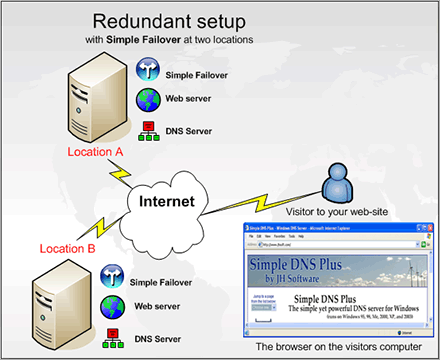
DNS Round Robin load balancing
Busy web-sites often use multiple web-servers in order to handle traffic
load.
Traffic can be distributed (load balanced) between such web-servers using DNS
round robin.
The DNS server simply rotaates the DNS records for each incoming DNS request,
resulting in each visitor being served by a different web-server.
However, DNS round robin in itself does not provide any failover functionality.
If one of the web-servers fail, some visitors will still be directed to the
failed server:
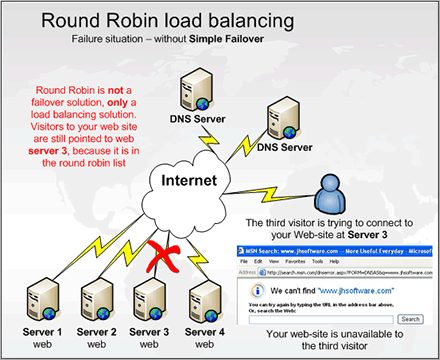
Simple Failover can correct this situation by removing the failed web-server
from the DNS round robin set:
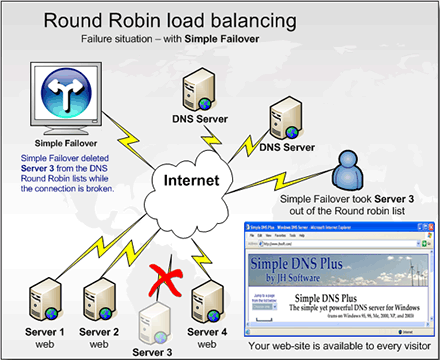
Internal failover router
Some larger web-sites use advanced hardware routers internally to distribute
load between web-servers, and to provide failover functionality (the router
detects failed web-servers, and does not route traffic to them).
The only problem is that this router is in itself a vulnerability.
If the router or the connection to it fails - the web-site is effectively down,
no matter how many servers are on the inside of the router.
And since the router and the servers are all in one geographical location,
everything is still vulnerable to the same disasters (floods, fires etc.):
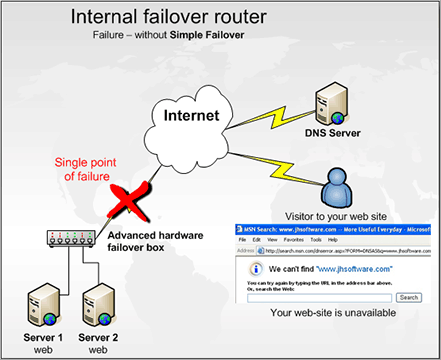
Simple Failover can correct this by re-routing traffic to an external web-server
if the primary location should be down:
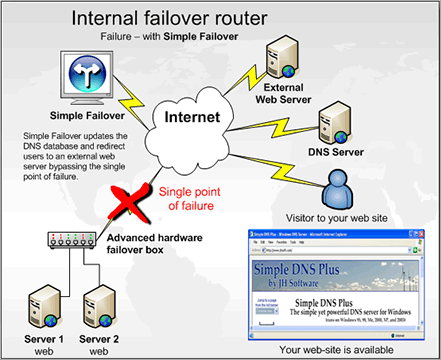
Dual WAN router
In this scenario, you have two separate Internet connections
and use a dual WAN router (in either load balancing or failover mode) to route
inbound traffic from either connection to the same web server on the local
network.
This setup does ensure better outbound connectivity, however if one of the
connections fail, and your DNS records are pointing to the IP address of that
connection, inbound connections to your web site will still fail:
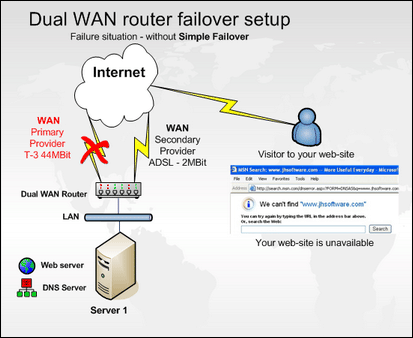
By placing
Simple Failover somewhere else on the Internet, and have it monitor the server
connections, it can correct the DNS records when needed, and visitors will still
reach your web-site:
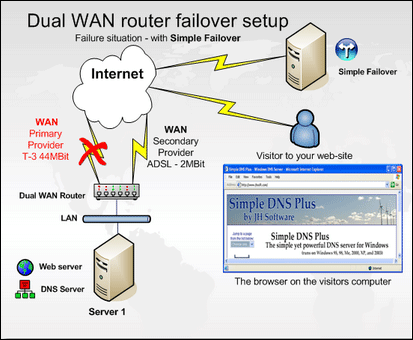
By configuring Simple Failover to update DNS via both server
connections, the DNS server can be on the same server as the web-server.
Two WAN routers
In this scenario, you have two separate Internet connections and use two
WAN routers to route inbound
traffic from either connection to the same web server on the local network.
However if one of
the connections fail, and your DNS records are pointing to the IP
address of that connection, inbound connections to your web site will
still fail:
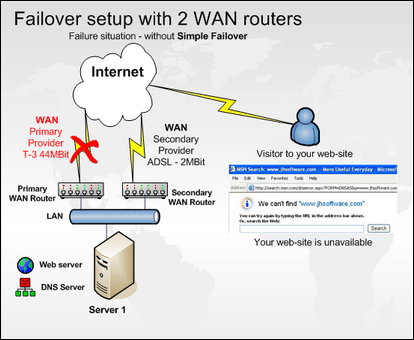
By placing Simple Failover somewhere else on the Internet, and have it
monitor the server connections, it can correct the DNS records when
needed, and visitors will still reach your web-site:
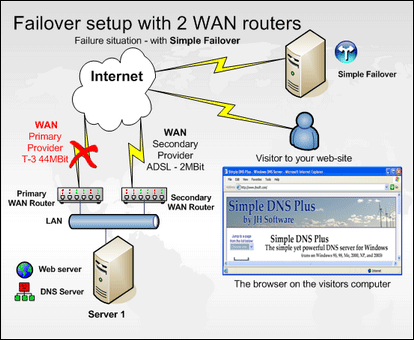
By configuring Simple Failover to update DNS via both server
connections, the DNS server can be on the same server as the web-server.